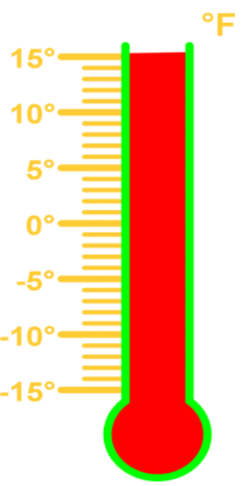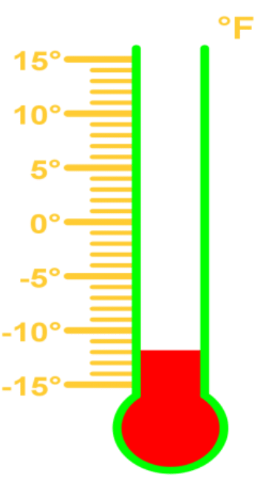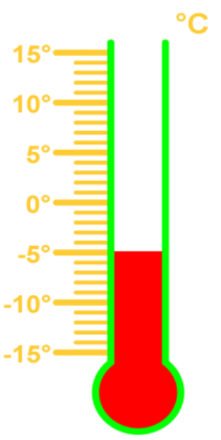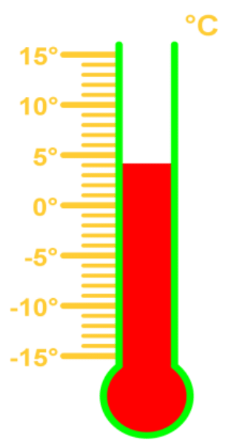Temperature
0/1
Intros
Lessons
- Introduction to Temperature
- Units of temperature - Fahrenheit and Celsius
- Reading a thermometer
- Common temperatures (water boils, water freezes, body temperature)
0/10
Examples
Lessons
- Reading a Thermometer
Record each temperature shown on the thermometer - Ordering Temperatures
- Calculating temperature change
- Average Temperature
- The temperature everyday at 9am was measured for 5 days and the following temperatures were recorded: 25°F, 10°F, 15°F, 25°F, 20°F. What was the average temperature at 9am for these 5 days?
- The temperature everyday at noon was measured for 5 days and the following temperatures were recorded: 20°C, 22°C, 18°C, 25°C, , 20°C. What was the average temperature for these 5 days?





